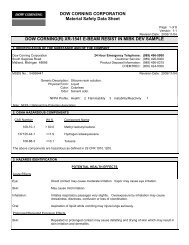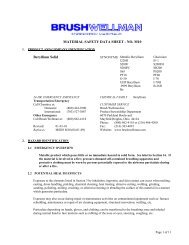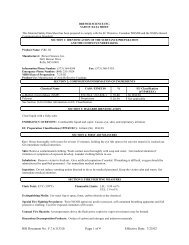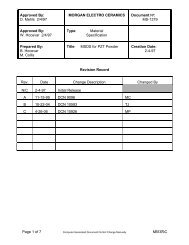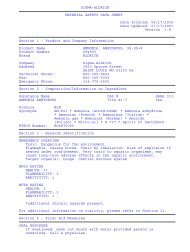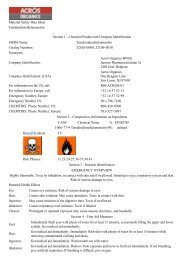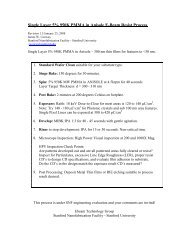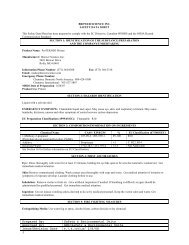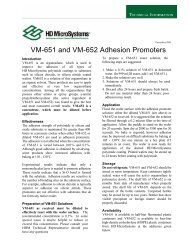EE 410 / Saraswat Handout #3 - Stanford Nanofabrication Facility
EE 410 / Saraswat Handout #3 - Stanford Nanofabrication Facility
EE 410 / Saraswat Handout #3 - Stanford Nanofabrication Facility
You also want an ePaper? Increase the reach of your titles
YUMPU automatically turns print PDFs into web optimized ePapers that Google loves.
<strong>EE</strong><strong>410</strong> / <strong>Saraswat</strong> <strong>Handout</strong> <strong>#3</strong><br />
• 2 (to pre-bake thicker resist appropriately.)<br />
• Expose: asml. The photoresist is patterned by exposure to UV illumination. More<br />
about this in section 4C.<br />
• Post-expose Bake: svgdev/2. The hot plate on the spin track can be used for postexpose<br />
bake:<br />
For the first five photomasks in the <strong>EE</strong><strong>410</strong> device, which have one micron of 3612<br />
resist, use programs:<br />
• 9 (to skip developer dispense),<br />
• 1 (for post-expose bake of 1.0 µm resist.)<br />
For the last, metal photomask, which has thicker resist, use programs<br />
• 9 (to skip developer dispense),<br />
• 2 (for post-expose bake of 1.6 µm resist.)<br />
• Develop/Post-Develop Bake: svgdev/2 is a two-track systems with standard<br />
developer recipes preprogrammed.<br />
For the first five photomasks in the <strong>EE</strong><strong>410</strong> device, which have one micron of 3612<br />
resist, use programs:<br />
• 8 (develop for 1.0 µm resist),<br />
• 1 (for post-develop bake of 1.0 µm resist.)<br />
For the last, metal photomask, which has thicker resist, use programs<br />
• 4 (develop for 1.6 µm resist),<br />
• 2 (for post-develop bake of 1.6 µm resist.)<br />
• Additional Post-Develop Bake: Although this is done in-line on the svgdev/2 tracks,<br />
this can also be done in the standard 100 C oven (30 minutes). This is done in the<br />
<strong>EE</strong>10 process flow whenever wafers with resist have sat for a period of time<br />
following photomasking.<br />
3C. ASML PAS 5500/60 Stepper System<br />
For 2008, <strong>EE</strong><strong>410</strong> will be photopatterned on the ASML PAS 5500/60 system recently installed at SNF.<br />
This is a 5:1 reducing I-line stepper, capable of resolution down to 0.35 microns. Rather than the fieldto-field<br />
alignment scheme of the Ultratech stepper used in previous years, the ASML, instead, uses<br />
wafer-level alignment marks which are laid down in the silicon substrate “zero layer” photomask.<br />
Although this requires an additional masking layer, the process is simple and yields a remarkably robust<br />
and flexible alignment scheme. For more detail on the ASML system, see the operations manual posted<br />
on the SNF website.<br />
For <strong>EE</strong><strong>410</strong>, there are three reticle masks, each with two images, for a total of six images, one for each<br />
photomask layer (the “zero layer” is patterned using “PM” marks available on a standard ASML-<br />
Revised Jan. 11, 2008 Page 11/47




